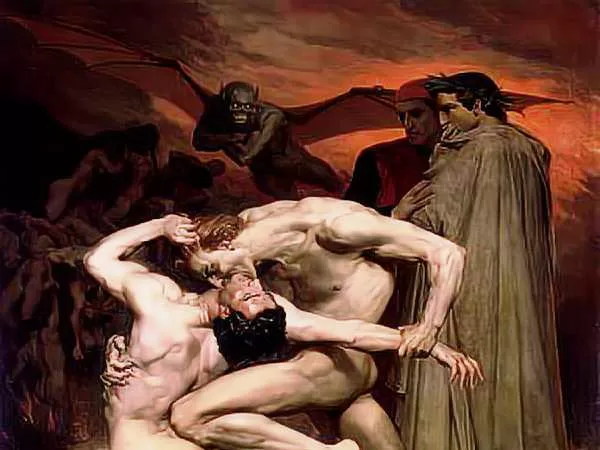Vampires, those enigmatic creatures of the night, have captivated our imaginations for centuries. From shadowy folklore to silver screen sensations, their allure persists. But where did it all begin? Let’s embark on a chilling journey through time, exploring the evolution of the vampire mythos.
The Ancient Roots of Vampirism
While the term “vampire” might conjure images of Dracula and brooding gothic castles, the roots of this legend delve much deeper into history.
- 5000 BC: A Mediterranean Awakening
The earliest whispers of vampiric lore seem to echo from the Mediterranean Basin. Shadows of these blood-drinking creatures begin to emerge in ancient myths and tales. - 2000 BC: The Egyptian Connection
Fast forward to Egypt’s golden age, and we encounter another intriguing piece of the vampire puzzle. The construction of a mysterious tomb in Giza, bearing eerie similarities to later vampire burials, hints at a more established belief in these creatures.
Vampires in the Age of Faith
The rise of Christianity brought new dimensions to the vampire mythos. The Church, with its power and influence, often wove these creatures into its narratives to reinforce moral and religious doctrines.
- 31 AD: Jesus and the Undead
The New Testament offers a curious reference to vampires. Jesus is said to have encountered and healed individuals exhibiting vampire-like characteristics in Capernaum. - 140 AD: The Vampire Emperor
Legend has it that Longinus, a Roman soldier who pierced Jesus’ side during the crucifixion, was cursed with vampirism for his actions. His reign as a bloodthirsty emperor adds a dark chapter to vampire lore. - 773 AD: Charlemagne and the Vampire Hunt
The legendary Emperor Charlemagne is credited with defeating Quadilla, a powerful vampire threatening Rome. This tale solidifies the vampire as a formidable foe, capable of challenging even the most powerful rulers.
The Middle Ages: Vampire Hysteria and Folklore
As society evolved, so too did the vampire mythos. The Middle Ages witnessed a surge in vampire-related beliefs and hysteria, often intertwined with witchcraft and demonic possession.
- 1047 AD: The First Vampire Name
The term “upir,” an early precursor to “vampire,” appears in a Russian document, marking a significant step in the evolution of vampire terminology. - 1096 AD: The Crusades and Vampire Cleansing
The First Crusade brought knights to the Holy Land, not just to battle Muslims but also to confront a more sinister enemy: vampires. These undead creatures were believed to lurk in the shadows, preying on the Crusaders. - 1428/29 AD: The Birth of a Legend
Vlad Dracula, the infamous ruler of Wallachia, is born. His brutal methods of impalement earned him the nickname “Vlad the Impaler,” a moniker that would later inspire Bram Stoker’s iconic vampire. - 1476/77 AD: Dracula’s Demise
Vlad Dracula’s reign of terror ends with his assassination, but his legend lives on, providing a rich foundation for future vampire tales.
The Renaissance and the Scientific Approach
The Renaissance brought a shift in perspective, with scholars and scientists attempting to explain the supernatural through reason and observation. However, the vampire myth proved resilient.
- 1530 AD: A Controversial Theory
Ludovico Fatinelli, an Italian scientist, dared to challenge the supernatural explanation for vampirism, suggesting a biological cause. His radical ideas led to a tragic end, as he was burned at the stake for heresy. - 1610 AD: The Blood Countess
Erzsebet Bathory, a Hungarian noblewoman, becomes infamous for her horrific crimes. Her obsession with bathing in the blood of young virgins to preserve her youth adds a chilling chapter to vampire folklore. - 1672 AD: Vampire Panic in Istra
The small region of Istra experiences a wave of vampire hysteria, leading to mass exhumations and the gruesome practice of staking suspected vampires.
The Enlightenment and the Modern Vampire
The 18th century brought a blend of scientific inquiry and popular culture, shaping the vampire into the iconic figure we recognize today.
- 1734 AD: Vampire Enters the English Language
The word “vampire” makes its debut in English, signaling a growing fascination with these creatures. - 1797 AD: Literary Vampires Emerge
Goethe’s “Bride of Corinth” and Coleridge’s “Christabel” introduce poetic and literary interpretations of the vampire, laying the groundwork for the gothic horror genre. - 1819 AD: The Birth of the Modern Vampire Novel
John Polidori’s “The Vampyre” is published, often credited as the first vampire story in English. This tale, along with Lord Byron’s influence, sets the stage for Bram Stoker’s iconic creation.
The Victorian Era and Beyond
The 19th century marked a turning point for the vampire, transforming it from a folklore creature into a literary and cinematic sensation.
- 1897 AD: Dracula’s Reign Begins
Bram Stoker’s “Dracula” is published, forever changing the vampire landscape. This novel introduced the quintessential vampire archetype: aristocratic, seductive, and eternally damned. - 20th Century and Beyond: Vampires in Popular Culture
The 20th century witnessed an explosion of vampire-themed works, from classic horror films to contemporary television shows. The vampire mythos continues to evolve, adapting to changing cultural and societal trends.
From its ancient origins to its modern-day incarnation, the vampire has endured as a captivating and enduring figure in human culture. Its ability to adapt and evolve ensures that this blood-sucking legend will continue to fascinate audiences for generations to come.

